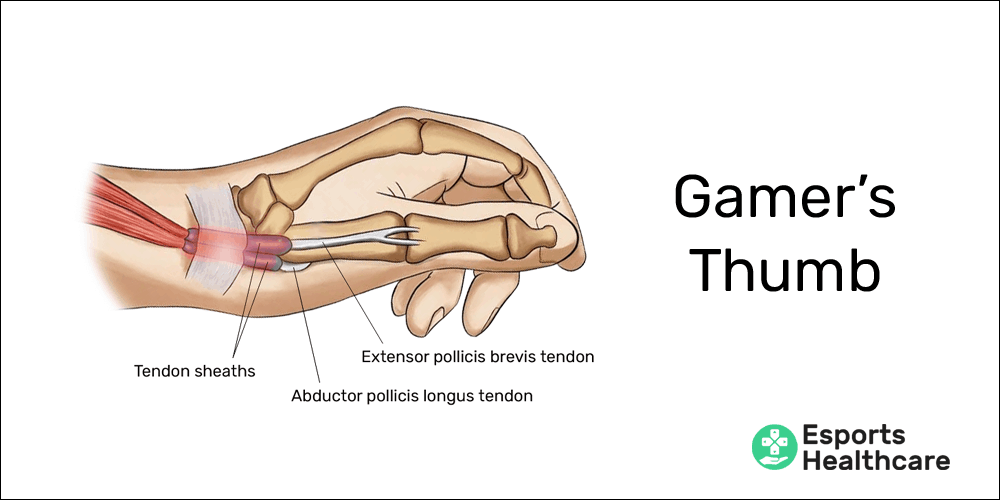Gaming, Health and Gaming, Weird History
The Nintendo Thumb Epidemic: A Look Back at a 1980s Health Phenomenon
Understanding Nintendo Thumb: Definition and Symptoms
Nintendo Thumb, a term that emerged in the late 1980s, refers to a repetitive strain injury attributed to the extensive use of video game controllers, particularly in the context of legacy gaming systems such as the Nintendo Entertainment System (NES). The condition is characterized by pain and discomfort primarily in the thumbs, which arises from prolonged, repetitive motion. Gamers engaging in extended play sessions often experience a range of symptoms that can significantly impact their daily activities.
The primary symptoms associated with Nintendo Thumb include pain or tenderness in the thumb joints, swelling, and stiffness. Individuals may also experience a sensation of weakness in the hands, making it challenging to grip objects or perform other hand-related tasks. In more severe cases, gamers might report tingling or numbness in the thumb and surrounding areas, indicative of nerve compression. These symptoms are primarily caused by the repetitive motions associated with pressing buttons, navigating directional pads, and maneuvering joysticks typical of gaming practices.
In a broader context, the occurrence of Nintendo Thumb serves as a notable illustration of how modern gaming habits can lead to physical ailments. The manual dexterity and strength required for controlling the game can understandably take a toll on the hand’s musculature and joints, leading to long-term consequences if the condition is ignored. As individuals transitioned from casual gaming to longer and more intense sessions, the physical stressors became more pronounced, highlighting the need for awareness about the potential health risks associated with gaming. Ultimately, understanding Nintendo Thumb’s definition and symptoms can help emphasize the importance of mindful gaming practices, encouraging players to take necessary breaks and prioritize their physical well-being.
The Historical Context: Gaming in the Late ’80s
The late 1980s marked a significant transformative period in the realm of video gaming, largely characterized by the emergence and rise of home gaming consoles. The introduction of the Nintendo Entertainment System (NES) revolutionized the gaming landscape, making video games more accessible to a broad audience. Previously dominated by arcade games, the market transitioned as families began to embrace the concept of gaming within the comfort of their own homes. The NES, launched in North America in 1985, rapidly gained traction, appealing to children and adults alike, which broadened the demographics of video game players.
During this time, gaming culture began to solidify, leading to the formation of communities centered around popular franchises and online forums where players could discuss strategies and share experiences. This surge in popularity cultivated an environment where prolonged gaming sessions became commonplace; players often engaged in hours of gameplay, leading to an almost ritualistic dedication to mastering titles like “Super Mario Bros.” and “The Legend of Zelda.”
Such behavioral patterns weren’t just the result of the engaging gameplay, but also a response to the technological advancements of the era. The NES featured improved graphics, sound, and gameplay mechanics, promoting longer play with captivating, immersive experiences. As players immersed themselves in the digital realms, the physical repercussions of these extensive sessions began to emerge, characterized by discomfort and strain in their hands and wrists, collectively leading to what came to be known as “Nintendo Thumb.” The cultural acceptance of longer gaming durations demonstrated not only a commitment to the medium but inadvertently gave rise to this health phenomenon.
In essence, the historical context of the late 1980s serves to explain how the convergence of innovative technology, evolving player demographics, and the ingrained culture of gaming contributed significantly to the emergence of Nintendo Thumb. As gaming continued to evolve, the habits formed during this era would leave a lasting imprint on the industry’s future.
Medical Documentation and Responses to the Epidemic
During the late 1980s, the rapid rise in popularity of video gaming gave way to a host of new health concerns, one of the most documented being the phenomenon known as “Nintendo Thumb.” This condition, recognized by many in the medical field, was characterized by soreness and inflammation in the thumb, often resulting in pain during movement. Medical professionals began reporting these symptoms in patients, leading to a flurry of official documentation, studies, and case histories examining the implications of prolonged gaming on physical health.
Health professionals started observing an uptick in patients presenting with symptoms consistent with overuse injuries, particularly among children and adolescents who spent excessive hours engaged in video game play. Initial medical reports emphasized the repetitive strain injuries linked to extensive hand movements required to manipulate gaming controls. Well-documented cases highlighted a significant correlation between time spent playing video games and the incidence of thumb-related ailments, leading to increased attention from the healthcare community.
In response to this emerging health crisis, various studies were launched, aimed at assessing not only the prevalence of Nintendo Thumb but also its underlying causes. Recommendations for treatment included rest, application of ice to reduce inflammation, and in certain cases, physical therapy aimed at strengthening the thumb and improving flexibility. In addition to treatment suggestions, healthcare providers began advocating for preventive measures. This included encouraging breaks during game play, promoting proper hand positioning, and even implementing ergonomic controllers designed to reduce stress on the hands.
The increasing recognition of Nintendo Thumb culminated in a broader dialogue about gaming-related injuries, pushing for more educational materials for both gamers and parents. Overall, the medical community’s proactive approach provided valuable insights and strategies to combat what was once viewed as an unconventional consequence of the video gaming craze.
Legacy and Lessons: The Impact of Nintendo Thumb on Modern Gaming
The Nintendo Thumb phenomenon, which emerged in the 1980s, has left an indelible mark on the gaming landscape, prompting both industry and consumers to acknowledge the importance of ergonomics in gaming design. The discomfort associated with prolonged play led to a shift in how gaming controllers were conceptualized and manufactured. As a direct response to the prevalence of Nintendo Thumb, manufacturers began to prioritize ergonomic designs that accommodate the natural contours of the hand and reduce strain on the fingers and wrists. This evolution has resulted in the development of gamepads with cushioned grips, strategically placed buttons, and shapes that enhance player comfort during long gaming sessions.
In addition to physical design changes, the Nintendo Thumb experience has fueled a broader awareness of health and wellness within the gaming community. The rise of repetitive strain injuries among gamers has prompted the industry to launch educational campaigns that emphasize proper gaming techniques and the importance of taking regular breaks. These initiatives aim to encourage responsible gaming habits, helping individuals to mitigate the risk of injury while remaining engaged with their favorite pastime.
Moreover, there has been a marked shift in gaming habits over the decades. With the advent of mobile gaming, the rise of casual gamers, and the increased popularity of titles that incorporate shorter play sessions, players today are more mindful of their gaming practices. These changes promote a more balanced approach to gaming, contrasting sharply with the all-consuming gaming sessions characteristic of earlier periods. Furthermore, modern consoles often feature built-in reminders for players to take breaks, a direct acknowledgment of the lessons learned from the Nintendo Thumb episode.
In conclusion, the legacy of the Nintendo Thumb epidemic underscores an essential evolution in gaming practices, from controller design to community awareness, shaping a safer and more enjoyable gaming environment for contemporary players.
Fairytale and Fantasy
Nerdy and Gaming
🎮🕹️ Contra Code Unisex Sweatshirt – The Ultimate Cheat Day Gear
Business and Finance
₿🔥 Bitcoin Logo Unisex T-Shirt – Crypto Style, Classic Comfort
Nerdy and Gaming
🕹️🎮 Classically Trained Unisex T-Shirt – Old School Gaming Glory
Funny and Sarcastic
Motivational and Inspirational
Nerdy and Gaming

















